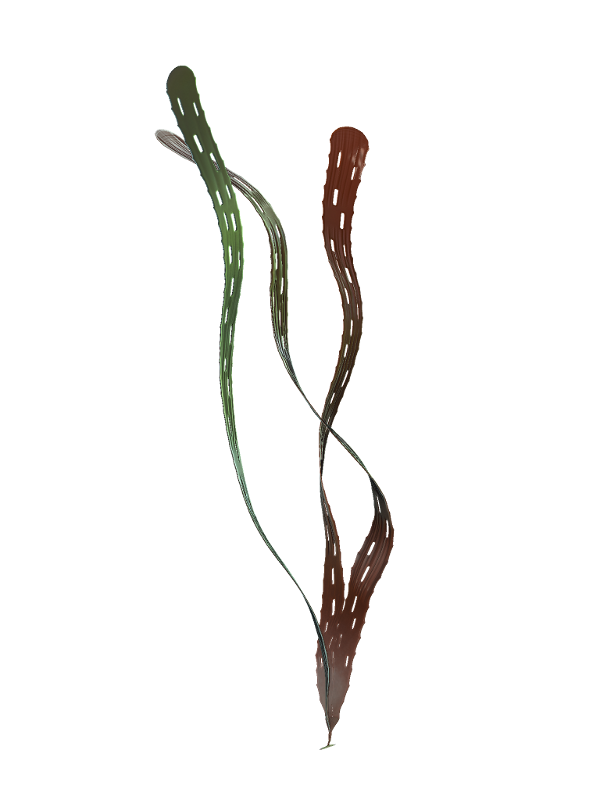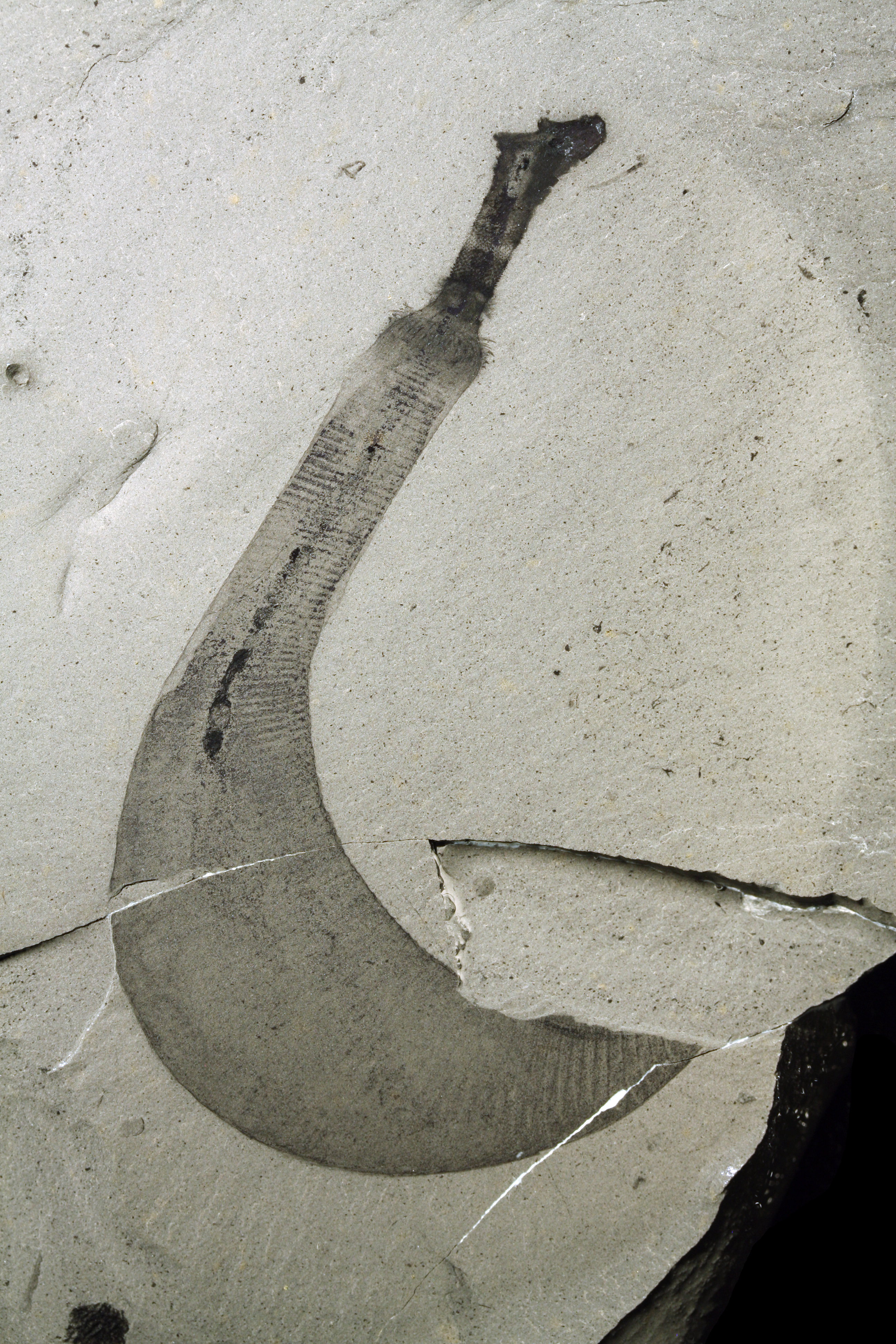|
Ceratophyton
''Ceratophyton'' is a genus of Cambrian acritarch, around 100–200 µm in length, produced by a eukaryotic ( metazoan?) organism. Affinity ''Ceratophyton'' has been interpreted as an originally chitinous component of a metazoan. An arthropod relationship has been proposed, although on a more conservative view it is difficult to provide confident classification beyond saying that they are fragments of a eukaryote. Particular species, however, show promising similarity to the sclerites of modern priapulid worms. Species ''C. vernicosum'' This species, the type, comprises a single unornamented cone. This species occurs in platform settings in western Russia in the Lontova and Lyukati horizons, first occurring in the local base of the 'Cambrian'. In Poland it occurs from the base of the Cambrian (''Platysolenites'' zone) to the ''Schmidtiellus'' zone. It has been reported from the middle Cambrian of Belgium, although these specimens are short on diagnostic features. It ... [...More Info...] [...Related Items...] OR: [Wikipedia] [Google] [Baidu] |
Acritarch
Acritarchs are organic microfossils, known from approximately 1800 million years ago to the present. The classification is a catch all term used to refer to any organic microfossils that cannot be assigned to other groups. Their diversity reflects major ecological events such as the appearance of predation and the Cambrian explosion. Definition Acritarchs were originally defined as non- acid soluble (i.e. non-carbonate, non-siliceous) organic-walled microfossils consisting of a central cavity, and whose biological affinities cannot be determined with certainty. Most commonly they are composed of thermally altered acid insoluble carbon compounds ( kerogen). Acritarchs may include the remains of a wide range of quite different kinds of organisms—ranging from the egg cases of small metazoans to resting cysts of many kinds of chlorophyta (green algae). It is likely that most acritarch species from the Paleozoic represent various stages of the life cycle of algae that were ance ... [...More Info...] [...Related Items...] OR: [Wikipedia] [Google] [Baidu] |
Cambrian
The Cambrian Period ( ; sometimes symbolized Ꞓ) was the first geological period of the Paleozoic Era, and of the Phanerozoic Eon. The Cambrian lasted 53.4 million years from the end of the preceding Ediacaran Period 538.8 million years ago (mya) to the beginning of the Ordovician Period mya. Its subdivisions, and its base, are somewhat in flux. The period was established as "Cambrian series" by Adam Sedgwick, who named it after Cambria, the Latin name for 'Cymru' (Wales), where Britain's Cambrian rocks are best exposed. Sedgwick identified the layer as part of his task, along with Roderick Murchison, to subdivide the large "Transition Series", although the two geologists disagreed for a while on the appropriate categorization. The Cambrian is unique in its unusually high proportion of sedimentary deposits, sites of exceptional preservation where "soft" parts of organisms are preserved as well as their more resistant shells. As a result, our understanding of the Cambria ... [...More Info...] [...Related Items...] OR: [Wikipedia] [Google] [Baidu] |
Australia
Australia, officially the Commonwealth of Australia, is a sovereign ''Sovereign'' is a title which can be applied to the highest leader in various categories. The word is borrowed from Old French , which is ultimately derived from the Latin , meaning 'above'. The roles of a sovereign vary from monarch, ruler or ... country comprising the mainland of the Australian continent, the island of Tasmania, and numerous smaller islands. With an area of , Australia is the largest country by area in Oceania and the world's sixth-largest country. Australia is the oldest, flattest, and driest inhabited continent, with the least fertile soils. It is a megadiverse country, and its size gives it a wide variety of landscapes and climates, with deserts in the centre, tropical Forests of Australia, rainforests in the north-east, and List of mountains in Australia, mountain ranges in the south-east. The ancestors of Aboriginal Australians began arriving from south east Asia approx ... [...More Info...] [...Related Items...] OR: [Wikipedia] [Google] [Baidu] |
Atdabanian
Cambrian Stage 3 is the still unnamed third stage of the Cambrian. It succeeds Cambrian Stage 2 and precedes Cambrian Stage 4, although neither its base nor top have been formally defined. The plan is for its lower boundary to correspond approximately to the first appearance of trilobites, about million years ago, though the globally asynchronous appearance of trilobites warrants the use of a separate, globally synchronous marker to define the base. The upper boundary and beginning of Cambrian Stage 4 is informally defined as the first appearance of the trilobite genera '' Olenellus'' or ''Redlichia'' around million years ago. Naming The International Commission on Stratigraphy has not officially named the 3rd stage of the Cambrian. The stage approximately corresponds to the "Atdabanian", which is used by geologists working in Siberia. Biostratigraphy The oldest trilobite known is '' Lemdadella'' which appears at the beginning of the ''Fallotaspis'' zone. The Cambrian rad ... [...More Info...] [...Related Items...] OR: [Wikipedia] [Google] [Baidu] |
Palaeoworld
''Palaeoworld'' is a peer-reviewed academic journal with a focus on palaeontology and stratigraphy research in and around China. It was founded in 1991 by the Nanjing Institute of Geology and Palaeontology at the Chinese Academy of Sciences (NIGPAS). The journal has been published quarterly since 2006; prior to 2006, it did not adhere to a fixed publication schedule. The journal publishes articles from several specialised fields pertaining to palaeobiology and earth science, such as: fossil taxonomy; biostratigraphy, chemostratigraphy, and chronostratigraphy; evolutionary biology; evolutionary ecology; palaeoecology; palaeoclimatology; and molecular palaeontology. Its editors-in-chief are Shuzhong Shen of the State Key Laboratory of Palaeobiology and Stratigraphy at NIGPAS, and Norman MacLeod of the Natural History Museum, London. See also * '' Paleontological Journal'' * List of fossil sites References External links * (Elsevier.com) * (ScienceDirect ScienceDirect ... [...More Info...] [...Related Items...] OR: [Wikipedia] [Google] [Baidu] |
Schmidtiellus
''Schmiditellus'' is an extinct genus of holmiid trilobites from the Cambrian of Poland. As of 2017, a ''Schmidtiellus reetae'' fossil from 530 mya, collected in Saviranna in northern Estonia, is the oldest known fossilized eye. The structure is similar to the compound eyes of modern-day dragonflies and bees, but with (~100) ommatidia spaced further apart, and without a lens A lens is a transmissive optical device which focuses or disperses a light beam by means of refraction. A simple lens consists of a single piece of transparent material, while a compound lens consists of several simple lenses (''elements'' .... References Cambrian trilobites Olenelloidea Fossil taxa described in 1906 {{Redlichiida-stub ... [...More Info...] [...Related Items...] OR: [Wikipedia] [Google] [Baidu] |
Priapulid Worm
Priapulida (priapulid worms, from Gr. πριάπος, ''priāpos'' 'Priapus' + Lat. ''-ul-'', diminutive), sometimes referred to as penis worms, is a phylum of unsegmented marine worms. The name of the phylum relates to the Greek god of fertility, because their general shape and their extensible spiny introvert (eversible) proboscis may resemble the shape of a human penis. They live in the mud and in comparatively shallow waters up to deep. Some species show a remarkable tolerance for hydrogen sulfide and anoxia. They can be quite abundant in some areas. In an Alaskan bay as many as 85 adult individuals of ''Priapulus caudatus'' per square meter has been recorded, while the density of its larvae can be as high as 58,000 per square meter. Together with Echiura and Sipuncula, they were once placed in the taxon Gephyrea, but consistent morphological and molecular evidence supports their belonging to Ecdysozoa, which also includes arthropods and nematodes. Fossil findings show ... [...More Info...] [...Related Items...] OR: [Wikipedia] [Google] [Baidu] |
Platysolenites
Platysolenites is a genus of agglutinated foraminifera known from Ediacaran The Ediacaran Period ( ) is a geological period that spans 96 million years from the end of the Cryogenian Period 635 million years ago (Mya), to the beginning of the Cambrian Period 538.8 Mya. It marks the end of the Proterozoic Eon, and th ... and lower Cambrian assemblages. Further reading # Platysolenites is shown to extend below the first appearance of P. antiquissimus in the Neoproterozoic-Cambrian boundary stratotype region, SE Newfoundland, and to occur at higher stratigraphic levels in Wales and Finnmark. References External linksHow old are Feraminfern from the University of Bonn. Foraminifera genera Paleozoic life of Newfoundland and Labrador {{foram-stub ... [...More Info...] [...Related Items...] OR: [Wikipedia] [Google] [Baidu] |
Sclerites
A sclerite (Greek , ', meaning " hard") is a hardened body part. In various branches of biology the term is applied to various structures, but not as a rule to vertebrate anatomical features such as bones and teeth. Instead it refers most commonly to the hardened parts of arthropod exoskeletons and the internal spicules of invertebrates such as certain sponges and soft corals. In paleontology, a scleritome is the complete set of sclerites of an organism, often all that is known from fossil invertebrates. Sclerites in combination Sclerites may occur practically isolated in an organism, such as the sting of a cone shell. Also, they can be more or less scattered, such as tufts of defensive sharp, mineralised bristles as in many marine Polychaetes. Or, they can occur as structured, but unconnected or loosely connected arrays, such as the mineral "teeth" in the radula of many Mollusca, the valves of Chitons, the beak of Cephalopod, or the articulated exoskeletons of Arthropoda. When ... [...More Info...] [...Related Items...] OR: [Wikipedia] [Google] [Baidu] |
Eukaryote
Eukaryotes () are organisms whose cells have a nucleus. All animals, plants, fungi, and many unicellular organisms, are Eukaryotes. They belong to the group of organisms Eukaryota or Eukarya, which is one of the three domains of life. Bacteria and Archaea (both prokaryotes) make up the other two domains. The eukaryotes are usually now regarded as having emerged in the Archaea or as a sister of the Asgard archaea. This implies that there are only two domains of life, Bacteria and Archaea, with eukaryotes incorporated among archaea. Eukaryotes represent a small minority of the number of organisms, but, due to their generally much larger size, their collective global biomass is estimated to be about equal to that of prokaryotes. Eukaryotes emerged approximately 2.3–1.8 billion years ago, during the Proterozoic eon, likely as flagellated phagotrophs. Their name comes from the Greek εὖ (''eu'', "well" or "good") and κάρυον (''karyon'', "nut" or "kernel"). E ... [...More Info...] [...Related Items...] OR: [Wikipedia] [Google] [Baidu] |



